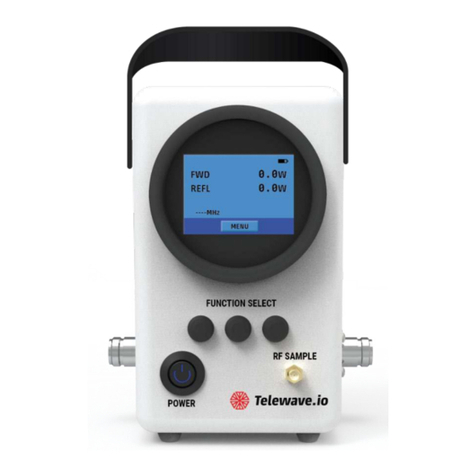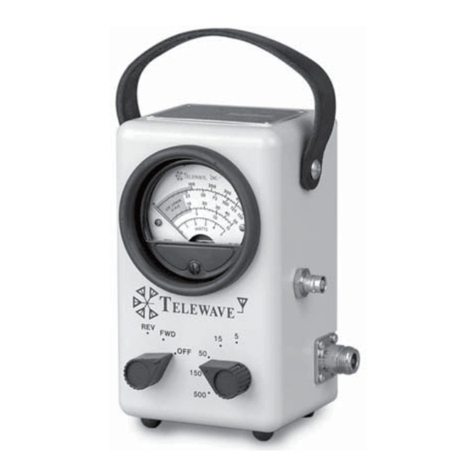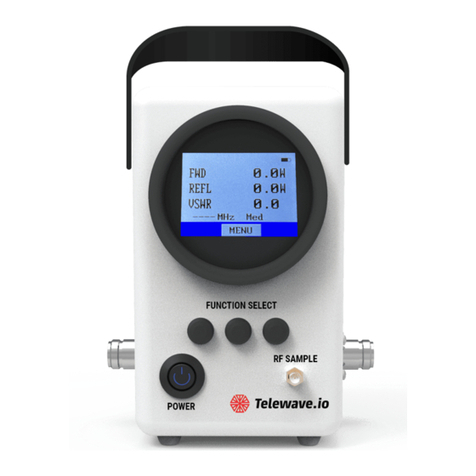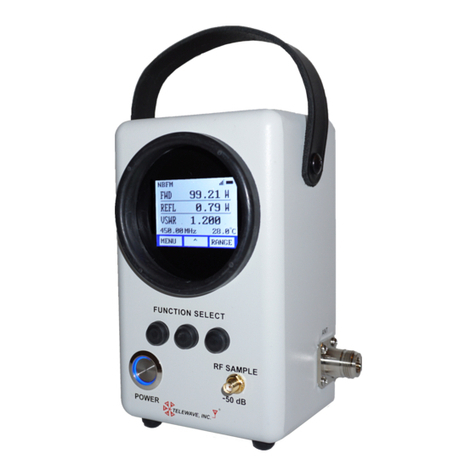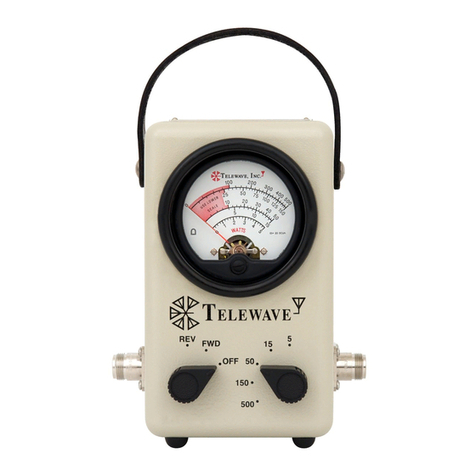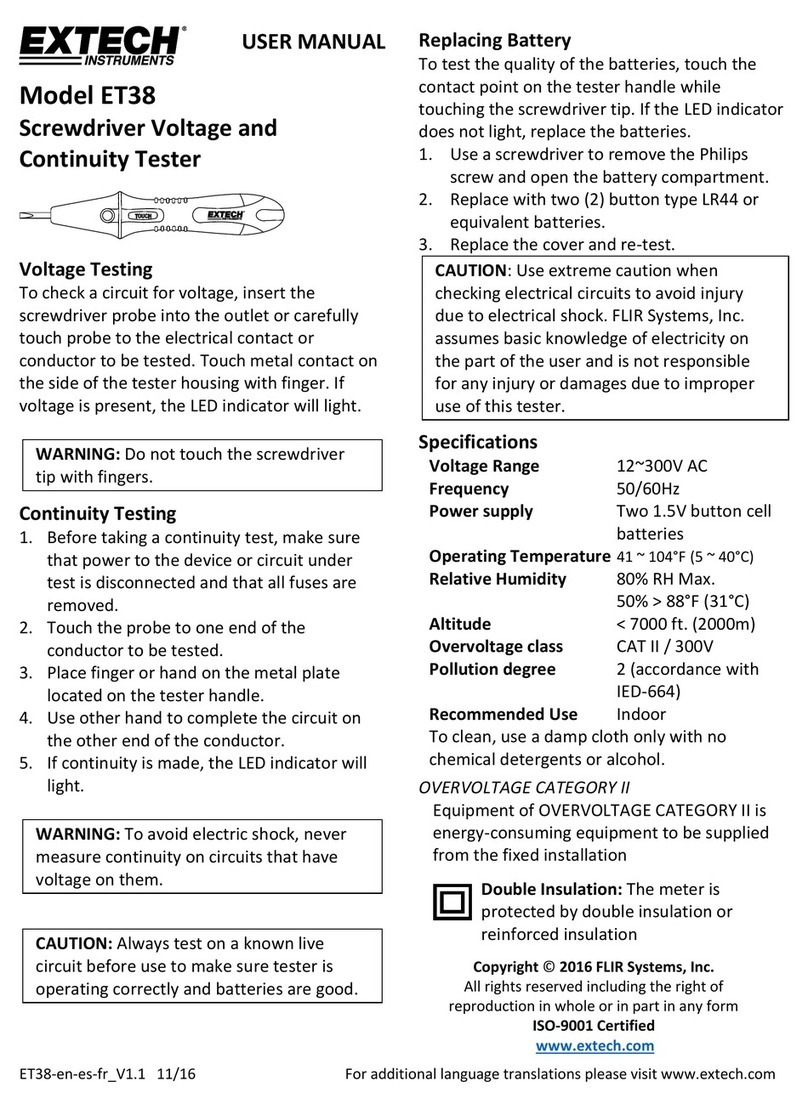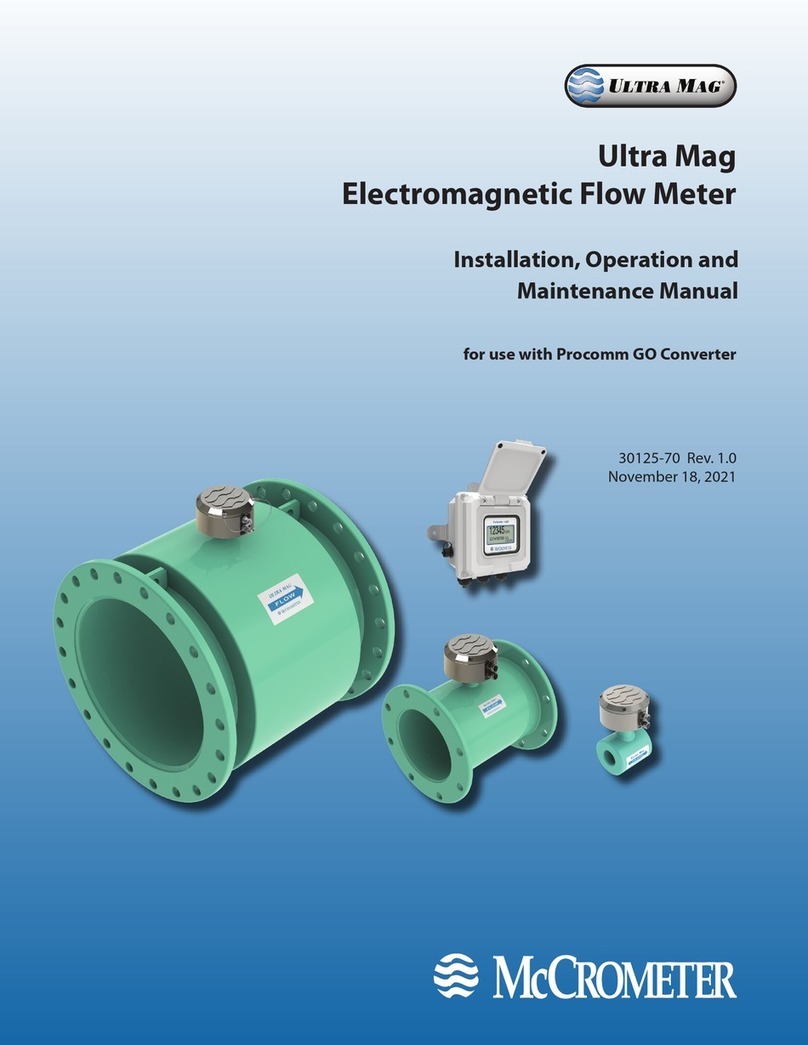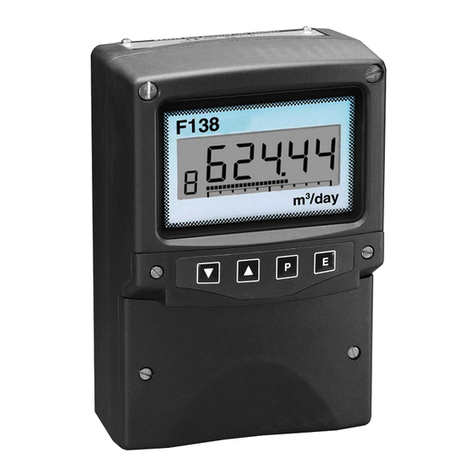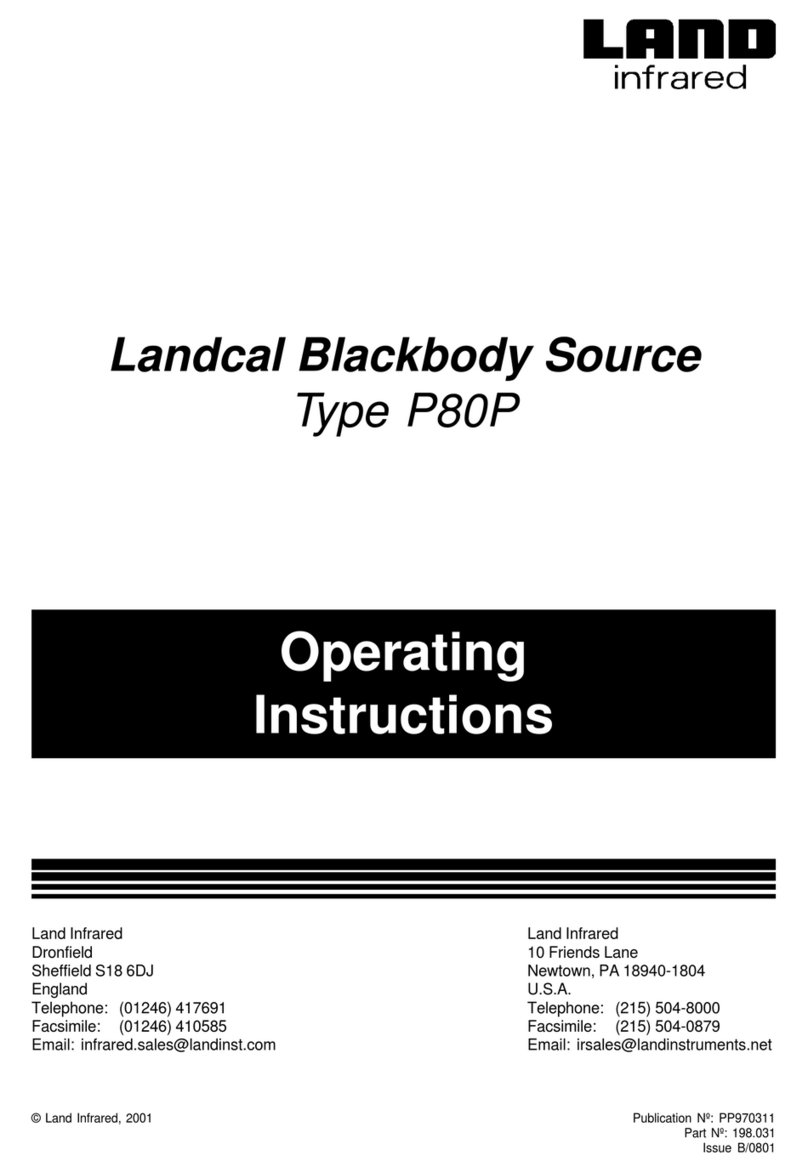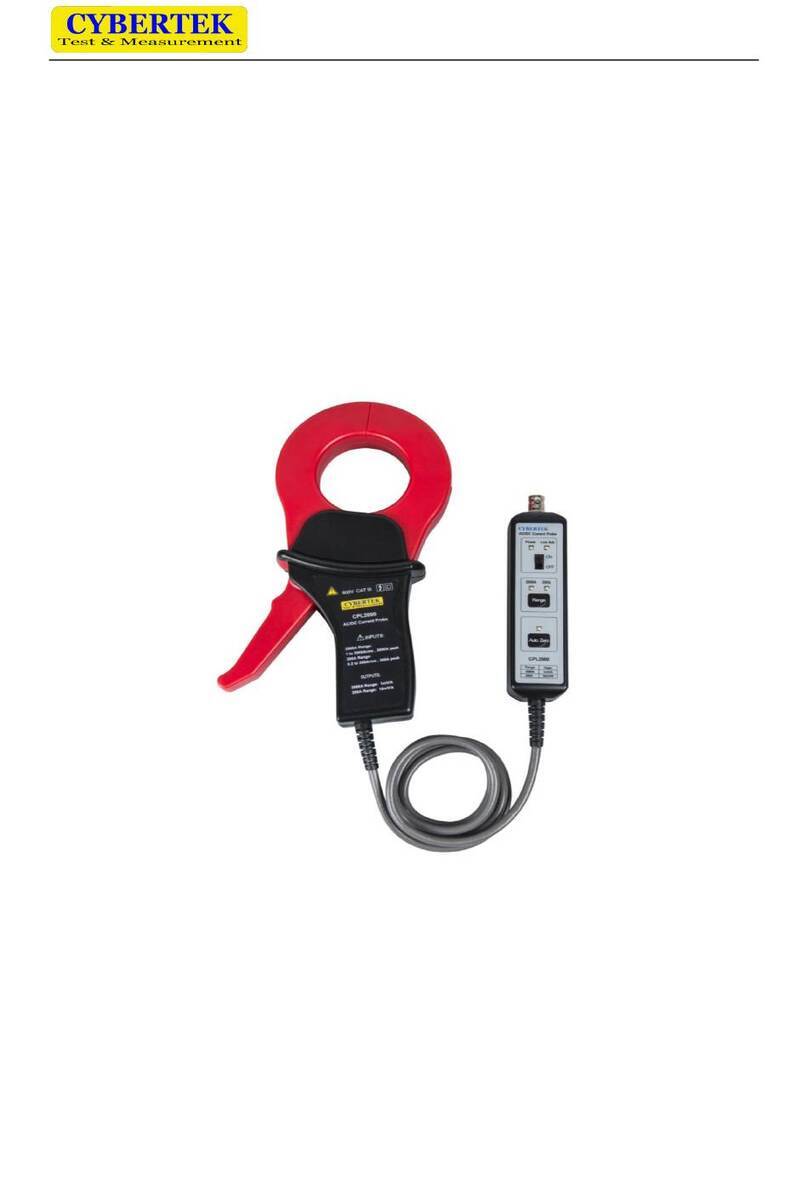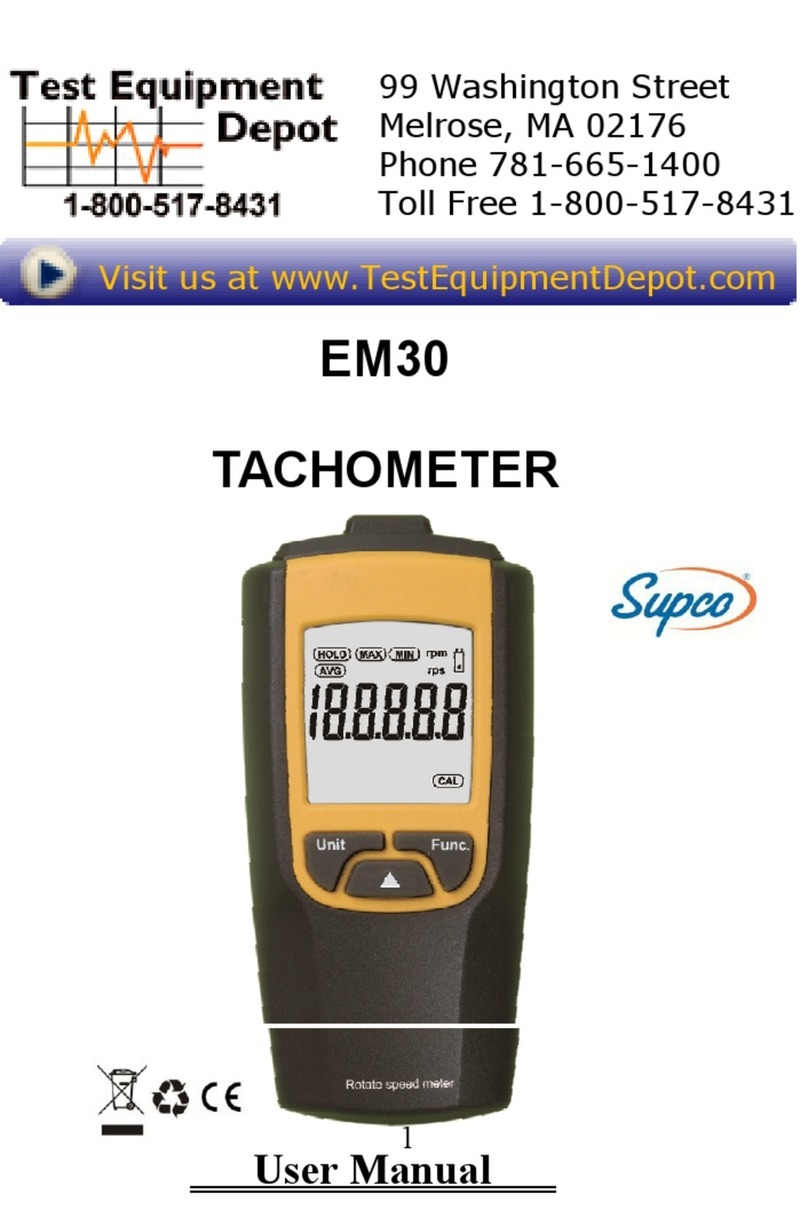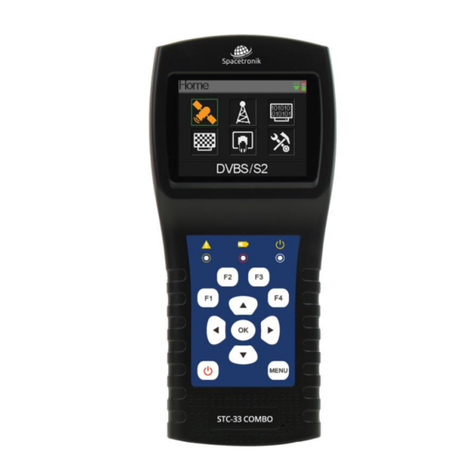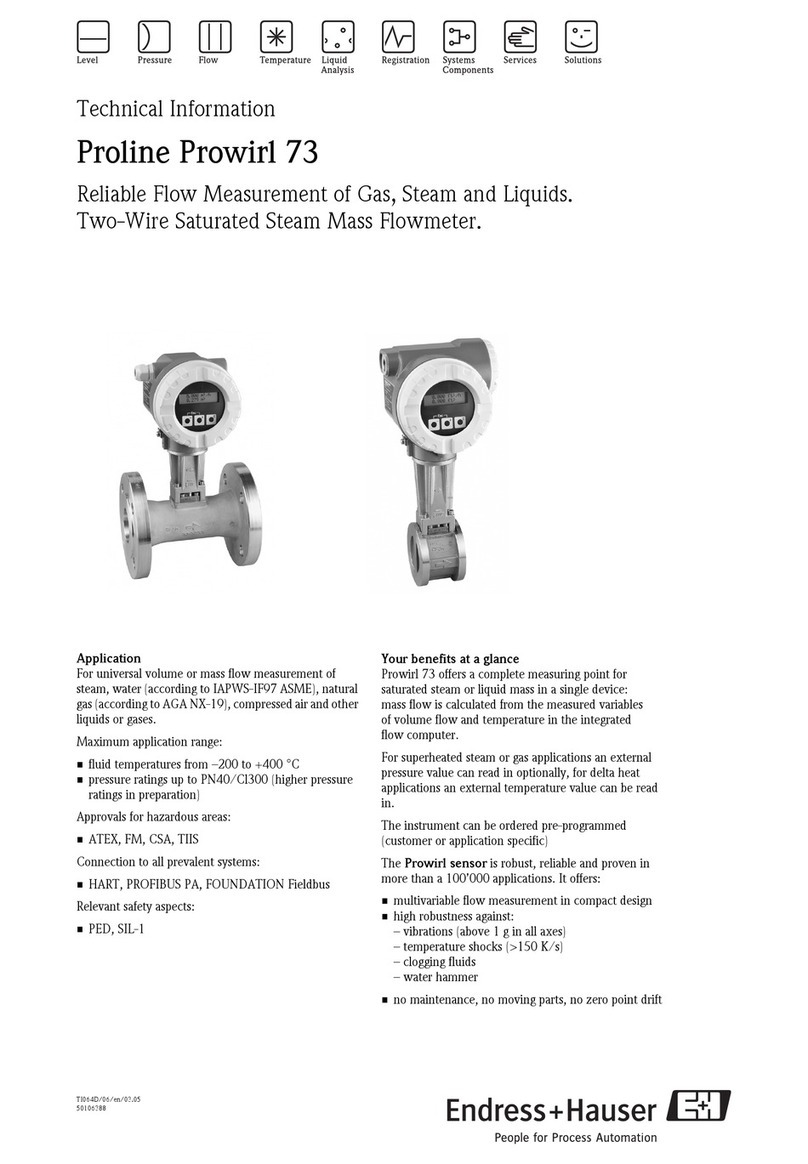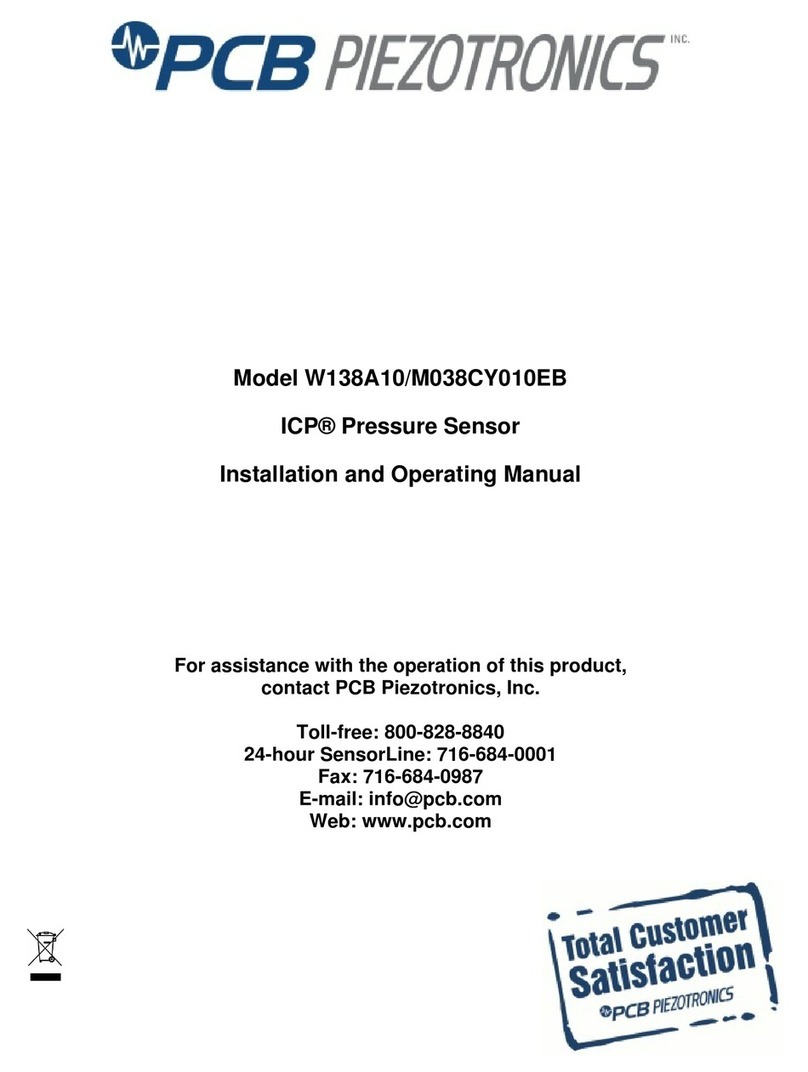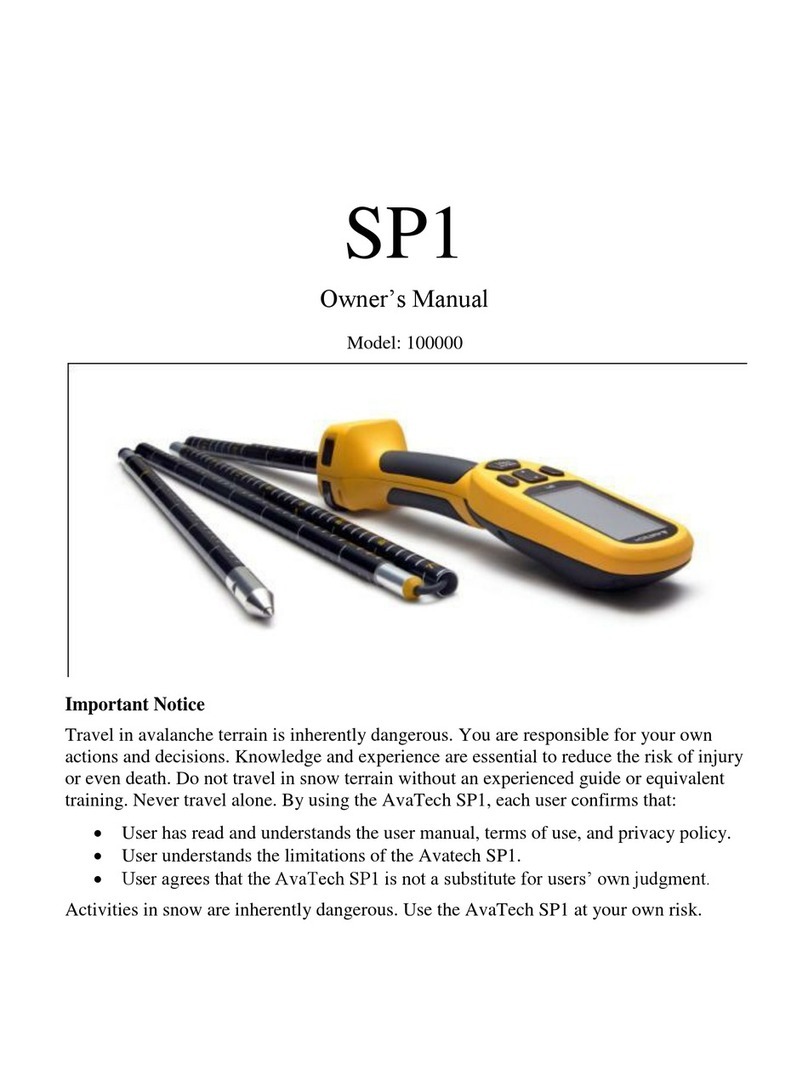TELEWAVE 44D User manual

Copyright © 2020 Telewave, Inc.
44D Digital/Analog Broadband RF
Wattmeter - User Manual
11 Mar 2020
Firmware Version TiF 1.01.18
Telewave, Inc.
48421 Milmont DR Phone 408-929-4400
Fremont, CA 94538 Toll Free 800-331-3396
www.telewave.com [email protected]

44D User Manual
Copyright © 2020 Telewave, Inc. Page 2of 20 Specifications subject to change without notice
11 Mar 2020
Copyright:
Copyright © 2020 by Telewave, Inc. All rights reserved.
Printed in the United States of America.
Disclaimer of Liability:
This manual contains Telewave, Inc. proprietary information, which is exempt from disclosure
under the Freedom of Information Act (5 USC 552). No part of this manual may be reproduced
or transmitted in any form or by any means, electronic or mechanical, including photocopying,
recording, or information recording and retrieval systems, for any purpose, without the written
consent of Telewave, Inc.
Warranty:
Products sold by Telewave, Inc. and covered by this Warranty are warranted to be free from defects in
material and workmanship at the time of and for a specified period after delivery to the Buyer. Seller's
entire warranty obligation is limited to making adjustments by repair, replacement, or refunding the
purchase price of any product which is returned to the Seller as provided below within the specified
period from the date of shipment by the Seller. In no event shall Seller be liable for direct, special, or
consequential damages for breach of warranty.
Adjustment will not be allowed for products which have been damaged by lightning, subjected to
abuse, improper application or installation, alteration or accident, or negligence in use, storage,
transportation or handling. Alteration or removal of the serial number or identification markings voids
the Warranty. Seller shall have the right of final determination as to the existence and cause of a defect,
whether adjustment will be allowed, and if allowed, whether adjustment will be by repair, replacement,
or refund. Where adjustment is not allowed, a charge of 5% of the original purchase price will be made
to the Buyer to cover the Seller's cost of inspection and handling.
Shipping and packaging instructions must be obtained from the Seller before products are returned for
adjustment. The Buyer will pay for packing, transportation, and transit insurance costs for returned
products. The Seller reserves the right to discontinue models at any time or change specifications,
design, or price without notice and without incurring any obligation. Products will be returned to the
Buyer with transportation cost collect.
Subject to the provisions of its "Patent Indemnity" clause, the Seller also warrants that it has the right
to sell its products, that the Buyer shall have and enjoy quite possession thereof as against any lawful
claims existing at the time of the sale by the Seller, and that said products are free from any charge of
encumbrance in favor of third persons existing at the time of sale by the Seller.
The foregoing constitutes the Seller's entire warranty, express, implied or statutory with respect to its
products and states the full extent of its liability for breach of Warranty and for damages, whether
direct, special or consequential resulting from any such breach. No change whatsoever thereto shall be
binding upon the seller unless made in writing and signed by a duly authorized representative of the
Seller.
Warranty Periods:
Antennas and antenna mounting hardware - 5 years
All other products - 1 year

44D User Manual
Copyright © 2020 Telewave, Inc. Page 3of 20 Specifications subject to change without notice
11 Mar 2020
Table of Contents
PRECAUTIONS AND SAFETY INSTRUCTIONS.................................................................................................4
QUICK START GUIDE .............................................................................................................................................5
LITHIUM BATTERY MANAGEMENT..................................................................................................................6
BATTERY CHARGING AND DISCHARGING...................................................................................................................6
OPERATION...............................................................................................................................................................7
CHARGING POWER SUPPLY &INTERNATIONAL POWER ADAPTERS...........................................................................7
POWER CONTROL ......................................................................................................................................................8
SLEEP MODE .............................................................................................................................................................8
MENU TREE...............................................................................................................................................................9
HOME SCREEN AND FIELDS DESCRIPTION ...............................................................................................................9
MAIN MENU.............................................................................................................................................................9
Frequency Range Menu .....................................................................................................................................10
Modulation.........................................................................................................................................................10
Settings Menu.....................................................................................................................................................10
Info & Help Menu ..............................................................................................................................................10
SPECIFICATIONS...................................................................................................................................................11
FREQUENCY RANGE ................................................................................................................................................11
POWER RANGE (CONSTANT ENVELOPE)MODULATION...........................................................................................11
POWER RANGE (NON-CONSTANT ENVELOPE)MODULATION..................................................................................11
RF AND MEASUREMENT..........................................................................................................................................11
USB CONNECTOR,BATTERY AND CHARGING.........................................................................................................12
MECHANICAL ..........................................................................................................................................................12
ENVIRONMENTAL ....................................................................................................................................................12
MISCELLANEOUS: ACCESSORIES, OPTIONS, MAINTENANCE................................................................13
INCLUDED ACCESSORIES.........................................................................................................................................13
OPTIONAL TC44 LEATHER CARRY CASE ................................................................................................................13
OPTIONAL “QUICK CONNECT -QC” THRU-LINE CONNECTORS...............................................................................13
MAINTENANCE &CALIBRATION .............................................................................................................................13
STORAGE.................................................................................................................................................................14
CLEANING ...............................................................................................................................................................14
APPENDIX: CONNECTING THE 44D TO THE CIRCUIT ...............................................................................15
CONCEPTS ...............................................................................................................................................................15
44D CONNECTION DIAGRAM...................................................................................................................................16
CALCULATING THE PRIMARY &SECONDARY CABLE CUT LENGTH ........................................................................16
SAMPLE PRIMARY AND SECONDARY CABLE LENGTHS............................................................................................16
Velocity Factor 66% ..........................................................................................................................................16
Velocity Factor 85% ..........................................................................................................................................18
APPENDIX: RF SAMPLE PORT ISOLATION....................................................................................................20

44D User Manual
Copyright © 2020 Telewave, Inc. Page 4of 20 Specifications subject to change without notice
11 Mar 2020
Precautions and Safety Instructions
1. Read the user manual carefully. All Warnings and Cautions should be noted.
Contact Telewave Support with any questions.
Keep the user manual(s) for future reference.
2. Keep the 44D away from sources of moisture or excessive humidity.
Never pour any liquid into the openings or connectors.
Do not immerse into any liquid. The 44D is water resistant, not water proof
3. Do not store this 44D in an unconditioned environment for an extended time. Prolonged
exposure to extreme heat, cold or moisture may cause damage.
4. Check the current capacity of the USB charger/power supply before connecting to the 44D.
5. Do not attempt to disassemble the 44D, there are no user serviceable parts inside.
6. Inspect the 44D if it has been dropped or exposed to excessive vibration.
7. Contact Telewave Support if any of the following conditions arise:
There are any obvious signs of damage –case, display, connectors, switches, or etc.
Any liquid appears to have penetrated into the case.
The 44D appears to malfunction or is giving obviously incorrect readings.
The 44D has been tampered with, or opened by anyone other than Telewave.
8. Follow all normal Radio Frequency safety rules and High Voltage safety rules.
Double check all connections and configurations before applying power to transmitters
Double check all connections and configurations before keying any transmitters
Be mindful of short and long-term exposure risks to Radio Frequency Radiation
WARNING: This symbol alerts you to the risk of personal injury, hardware damage or
irrevocable loss of data.
CAUTION: This symbol denotes situations where instructions must be followed carefully
to avoid personal discomfort or to obtain expected results.

44D User Manual
Copyright © 2020 Telewave, Inc. Page 5of 20 Specifications subject to change without notice
11 Mar 2020
Quick Start Guide
The complete 44D User Manual is available for download at www.telewave.com.
1. Unpack and inspect the 44D and accessories (USB cable, AC power supply, & AC adapter kit)
a. Check the box and contents for any damage immediately after it arrives
b. In case of damage or missing items, contact Telewave immediately, 408-929-4400 Opt 1.
2. Charge the Batteries
a. Connect the supplied USB cable into the 44D (connector on the back) and into the supplied
AC power supply. Plug the power supply into a 90 to 250 VAC (50 or 60 Hz) wall socket
(Charging begins automatically –there is no charging indication when the 44D is off)
b. The 44D must be charged for at least 2 hours before turning on for first use.
The 44D cannot be switched ON or OFF while charging via the USB. Disconnect the USB cable,
toggle the power button, and then re-connect the USB to continue charging.
See the section “Lithium Battery Management” (next page) for battery management details
3. Build or procure “Primary Cables”(see “Appendix - Connecting the 44D to the Circuit”)
4. Press and hold the power button until the blue power indication in the switch illuminates
5. The 44D will be functional in three to five seconds as indicated by:
a. Backlight will be illuminated
b. Frequency, temperature & battery indicators are displayed
6. The HOME screen & menu tree:
MENU ^MEAS ^CALC
V Measurements Calculations
Freq Range > Set low, medium or high frequency range
Modulation > Selects the type of modulation to measure
Settings > Modify some look & feel parameters
Info & Help > Show Version, Telewave contact
Exit > Return to the HOME screen
7. When in any MENU screen other than the HOME Screen, the
function buttons will be UP, SELECT/EXIT, and DOWN.
a. Press SELECT implements the selection & returns HOME
b. Press EXIT aborts the selection and returns HOME
8. Set the Frequency Range before use, all other settings are optional
9. Once the 44D has been configured, the cables can be connected
a. Connect the primary cable to the port labeled TX on the left side of the 44D (RF input)
b. Connect the cable leading to the antenna to the port on the right side of the 44D (RF output)
10. The RF Sample port can be connected to any monitor or source test equipment. The sample
port is bi-directional, with connectivity to both the Thru Line TX and Thru Line ANT port.
Wiring Diagram
Original Circuit ½ WL Increment
Insert test cables 44D
& 44D at the TX ANT
Component output
Primary Cable (1/2 WL increment minus 5”) Secondary Cable (Optional = ½ WL increment)

44D User Manual
Copyright © 2020 Telewave, Inc. Page 6of 20 Specifications subject to change without notice
11 Mar 2020
Lithium Battery Management
Lithium-ion batteries are used in the 44D to supply power. The behavior of the 44D batteries is
similar to other devices that use the same battery technology (cell phones, iPads, etc.). Please
carefully read this section regarding battery safety and operation details.
Battery charging and discharging
The battery can be charged when the 44D is on or off, and can be charged from any USB source
that can support a 2.4 amp load (wall charger, vehicle adapter, etc. –laptop not recommended)
Charging begins automatically when power is applied to the USB port.
When the 44D is powered off there is no charging indication.
When the 44D is on, the battery life display turns yellow indicating the batteries are charging.
Depleted batteries will require 8 hours of charging time to reach a full charge.
Fully charged batteries will support about 8 hours of active operation.
Battery charge indication: discharging: Charging:
Bars 4 = Full 8 hours use time remain trickle charge mode, see NOTE below
Bars 3 ~ 3/4 6-8 hours use time remain normal charge mode, can use while charging
Bars 2 ~ 1/2 4-6 hours use time remain normal charge mode, can use while charging
Bars 1 ~ 1/4 2-4 hours use time remain normal charge mode, can use while charging
Flashing <1/4 0-2 hours use time remain trickle charge mode, do not use the 44D
NOTE: The 44D can be used when charging, but when the charger is in trickle mode there is not
enough current provided to operate the 44D; the batteries will eventually be depleted.
WARNING
The batteries must be discharged to 1/3 or less capacity before the unit can be transported by Air.
This is a legal and safety requirement for all lithium batteries.
The internal batteries are not user serviceable. The 44D must be returned to Telewave for service
if the batteries no longer accept or retain a sufficient charge.
Excessive cold or hot temperature can damage the batteries or create a fire hazard.
CAUTION
Fully charge the batteries upon initial receipt; also before and after long term storage.
Fully charge the batteries at least once a month during long term storage
The batteries may self-deplete and malfunction unless they are periodically re-charged.
Once the internal charging controller detects that the batteries are fully charged, it will reduce the
charging rate to trickle. The rate will remain at trickle until the USB is unplugged.
The 44D can be left on the charger for longer than 24 hours, but this is not recommended.

44D User Manual
Copyright © 2020 Telewave, Inc. Page 7of 20 Specifications subject to change without notice
11 Mar 2020
Operation
Charging Power Supply & International Power Adapters
The included power supply for charging the batteries supports 90 to 250 volts at 50 or 60 hertz.
The power plug on the power supply is an IEC international “Plug Type A”.
Type A to Type C, G, and I adapters are included with the 44D. This AC adapter kit will allow
the power supply to be safely connected to the power sockets in most countries.
Visit the International Electro technical Commission (IEC) website for a complete list of socket
types, and power voltage/frequencies used in various countries: http://www.iec.ch/worldplugs/.
Description
Picture
Short list of Areas/Countries where the “Type” is used
Type A
Plug on the
power supply
North and Central America, Japan
Directly compatible with Type B sockets
Type C
Universal to
Euro 2P AC
Power Plug
Europe (except UK), Ireland, Cyprus, Malta
Directly compatable with Type E, F, J, K, & N sockets
Type G
Universal to
UK 3P AC
Power Plug
UK, Ireland, Cyprus, Malta, Malaysia, Singapore,
Hong Kong
Type I
Universal to
AUS 3P AC
Power Plug
Australia, New Zealand, Papua New Guinea, Argentina,
China

44D User Manual
Copyright © 2020 Telewave, Inc. Page 8of 20 Specifications subject to change without notice
11 Mar 2020
Power Control
The 44D has a latching push power button in the lower left corner of the front panel.
To turn the 44D ON, push the power button until you hear a clicking sound and/or you see that
the power switch rim is illuminated with a blue glow. After a few seconds the display backlight
will illuminate, and the power up sequence will be shown in the display.
The power up sequence, as is seen in the display is:
The screen backlight will illuminate after about two seconds
Then the HOME screen will display
After that the frequency, temperature and battery status indications will be displayed
Once the power up sequence is complete the HOME screen will indicate the settings that were
selected when the 44D was previously turned off (units of measurement, backlight level, etc.)
The power switch will remain partially depressed while the 44D is turned on.
To turn the 44D OFF, push the power button in slightly further, and release. The switch will
return to the flush position, the blue rim light will extinguish, the display backlight will turn off
and the display will become blank. There are no lights or display activity when the unit is off.
Sleep Mode
The 44D can be configured to go to “sleep” after few of minutes of inactivity. Inactivity is
defined as no function select buttons have been pushed. If the 44D is connected to a transmitter
and is reading power, it will still go to sleep if the sleep timer expires (no buttons were pushed.)
Sleep mode is indicated by the following:
The display backlight will extinguish and the display will be blank/dark
The 44D will emit a beep sound as it is going to sleep
The blue ring around power button will remain lit
To wake the 44D, turn off the power button and then turn it back on.
The 44D will boot back to the previous configuration in a few seconds.
CAUTION: The 44D will only go into sleep mode when the HOME screen is displayed.
When any screen other than HOME is displayed and the sleep timer expires, the 44D will wait
for the user to complete the pending action; and then go to sleep.
NOTE: RF signals will flow though the through line sensor un-impeded with the 44D
power turned on or off. Any live circuits that are monitored with the 44D will not be affected if
the 44D goes to sleep or is turned off while connected to the circuit.

44D User Manual
Copyright © 2020 Telewave, Inc. Page 9of 20 Specifications subject to change without notice
11 Mar 2020
Menu Tree
HOME Screen and Fields Description
Battery Status
FWD (measured forward power)
Measured Value
Avg (W/dBm) or Peak (W/dBm)
REFL (measured reflected power)
Measured Value
Avg (W/dBm)
Calculated Info
Calculated Value
VSWR / Return Loss / Crest Factor
Measured Frequency MHz
Measured Temperature C or F
MENU
^MEAS
^CALC
After the system has completed the power up sequence the default screen configuration is shown.
Top Row indicates the Battery Life
The second and third rows indicate results measured from the main thru line connectors.
These measurements are the primary function of the 44D.
The forth row indicates calculated results based on the measurements from rows two and three.
The fifth row indicates the measured frequency of the RF signal, and the ambient temperature of
the critical RF detector circuits. The 44D compensates for temperature changes, allowing high
accuracy at any ambient temperature within the specification range.
NOTE: All measured and calculated indications will be zero “0” or dash “---“ until the
average power level detected on the forward through line connector exceeds 5 watt (minimum.)
The bottom row indicates the current function of the three buttons located just below the screen.
The purpose of each of these buttons change as the needed for easy configuration of the 44D.
The HOME screen function buttons are:
MENU Open the MAIN menu
^MEAS Rotate the Measured results display between Average or Peak Power
in Watts or dBm.
^CALC Rotate the Calculated results display between VSWR / Return Loss,
and Crest Factor (indicated in dB in place of PAPR, no linear indication)
MAIN Menu
The main MENU allows access to these categories:
FREQ RANGE Configure the frequency range Low, Medium or High
MODULATION Choose the desired modulation type
SETTINGS Adjust the display parameters
INFO & HELP Read only attributes and Telewave contact information
EXIT Return to the HOME screen
CAUTION: The frequency range must be set to the proper range before reading the power.
For the main MENU and all Sub-Menus
Scroll up and down in the options by pressing the UP and DOWN buttons.
Pressing the SELECT key will select the currently highlighted item.
Selecting EXIT will return to the HOME screen without making any changes.

44D User Manual
Copyright © 2020 Telewave, Inc. Page 10 of 20 Specifications subject to change without notice
11 Mar 2020
Frequency Range Menu
The menu will list all modulation types supported by the current hardware & firmware version
88-100 MHz Select for measuring frequencies between 88 and 100 MHz
101-400 MHz Select for measuring frequencies between 101 and 400 MHz
401-1000 MHz Select for measuring frequencies between 401 and 1000 MHz (1 GHz)
EXIT Return to the HOME screen
CAUTION: The Frequency Range is the only mandatory setting. The 44D will not be able
to accurately measure the absolute power of the signal if the range is not set correctly.
Modulation
The supported list of modulation types is:
CW, FM, P25 (1&2), DMR/d-PMR, IDAS/NXDN, D-Star, Fusion
The modulation selection toggles between non-TDMA & TDMA type modulations.
Analog/P25I/CW Non-TDMA Modulation
P25II/DMR TDMA Modulation
EXIT Return to the HOME screen
Settings Menu
This menu is for setting the units of measurements and other behavioral parameters of the 44D:
Power Units Select forward and reverse power display in Watts or dBm
Temperature Select temperature display in Fahrenheit or Celsius
Backlight Select the backlight intensity: Low, Medium, High
Power Saving Select duration of sleep initiation timer
EXIT Return to the HOME screen
Power saving selections:
Sleep in 30 Min Select sleep after 30 minutes of inactivity
Sleep in 15 Min Select sleep after 15 minutes of inactivity
Sleep in 5 Min Select sleep after 5 minutes of inactivity
Disable Sleep Select never sleep
Info & Help Menu
This menu is for query of the attributes of the 44D:
About Display the serial number, hardware and firmware version of the 44D
Help Display the phone number and email address of Telewave support
EXIT Return to the HOME screen

44D User Manual
Copyright © 2020 Telewave, Inc. Page 11 of 20 Specifications subject to change without notice
11 Mar 2020
Specifications
If the 44D is reading a signal that is outside the range of these specifications; the 44D will
indicate that it is “Out of Range”. Accuracy of the 44D is compromised when out of range.
Frequency Range
Calibrated Range 88 MHz to 1000 MHz (1 GHz)
Power Range (Constant Envelope) Modulation
Forward Power Average (Min to Max) 5 Watt to 500 Watts (37 dBm to 57 dBm)
Power Range (Non-Constant Envelope) Modulation
Forward Power Average (Min to Max) 5 Watt to 250 Watts (37 dBm to 54 dBm)
Forward Power Peak (Min to Max) 10 Watt to 500 Watts (40 dBm to 57 dBm)
RF and Measurement
RF Impedance of all RF Ports 50 Ohms
Thru-Line RF connectors supported N-Female
Sample RF port connector supported SMA-Female
Worse case VSWR (Return Loss) 50 Ohm Line < 1.21:1 (> 20.5 dB)
RF Insertion Loss (through main RF connectors) Less than 0.02 dB up to 500 MHz
Less than 0.04 dB up to 1 GHz
RF Sample Port Insertion Loss -50 dB +/- 2 dB from 200 MHz to 1 GHz
-50 dB +0/-12 dB from 88 MHz to 200 MHz
See “Appendix –RF Sample Port Isolation” for isolation by frequency details
Frequency Counter Accuracy +10/-20 KHz at all frequencies
Maximum Settling Time 2 Seconds (Pulsed Digital/Analog)
(Time required to capture, 2 Seconds (Continuous Digital)
Process, and display the result) 1 Second (Continuous Analog)
Thru Line Coupler Directivity Minimum >20 dB
RMS RF Power Measurement Accuracy +/- 6% from 88 MHz to 1 GHz
Peak RF Power Measurement Accuracy +/- 6% from 88 MHz to 1 GHz

44D User Manual
Copyright © 2020 Telewave, Inc. Page 12 of 20 Specifications subject to change without notice
11 Mar 2020
USB Connector, Battery and Charging
Battery Life 8 hours on time for fully charged batteries
Battery Charge Time 8 hours to fully charge depleted batteries
USB Charger VAC Requirements 90 to 250 VAC at 50 or 60 Hz
Universal Power Plug Adapter Kit Charger comes with an IEC Type A plug
IEC (International Electrotechnical Commission) Adapter kit converts to Type C, G or I plug
Compatible Type B, E, F, J, K, & N socket
USB Charger VDC Requirements 5 Volts DC at maximum 2.4 Amps
(Simultaneous charging and operation)
USB Connector USB 2.0 Type B Jack
Mechanical
44D weight 3 lb (1.4 kg)
44D dimensions (LWH) inches (CM) 6.75”x 5.50”x 4.00”
Incl. knobs/feet/connectors - not incl. the handle (17.15 x 14.00 x 10.15 cm)
Shipping weight 44D only 4 lb (1.8 kg)
Shipping weight with optional case 5 lb. (2.3 kg)
Shipping dimensions (LWH) inches (cm) 10.00”x 8.00”x 6.00"
(25.40 x 20.30 x 15.25 cm)
Environmental
International Protection Marking IEC Standard 60529, IP54
Temperature (High –Storage & Operation) MIL-810-F, Method 501.4
Humidity MIL-810-F, Method 507.4
Shock MIL-810-F, Method 516.5
Humidity Range (Operating / Storage) 35% to 85% non-condensing
Temperature Range Operating (USB Connected) +32°F to +113°F (0°C to +45°C)
Temperature Range Operating (USB Disconnected) -4°F to +122°F (-20°C to +50°C)
Temp Range Storage (Long) (USB Disconnected) +68°F to +86°F (+20°C to +30°C)

44D User Manual
Copyright © 2020 Telewave, Inc. Page 13 of 20 Specifications subject to change without notice
11 Mar 2020
Miscellaneous: Accessories, Options, Maintenance
Included Accessories
The 44D comes with:
Universal (wall wart type) USB power supply (2.4 Amp or greater load capacity)
USB type A to type B cable
Universal AC Plug Adapter Kit (complete adapter kit)
oType C Male to US Female Adapter (1 each)
oType G Male to US Female Adapter (1 each)
oType I Male to US Female Adapter (1 each)
If replacement parts are needed, please source locally
Optional TC44 Leather Carry Case
For transport and storage of the 44D and accessories. Contact Telewave to order.
Optional “Quick Connect - QC” Thru-Line Connectors
The default connector on the 44D TX and ANT ports is N-Female. The connector is a 4 hole
flange “Quick Connect”style, & is field replaceable (internal stinger does not require soldering.)
QC style connectors other than N-Female can be purchased via 3rd party vendors.
Telewave recommends that the connectors not be replaced, but instead use an N to X adapter for
situations where an N-Female connector is not compatible with the local cable environment.
The default N style QC connector must be placed back onto the 44D before it is returned to
Telewave for any calibration or repair. Telewave will preplace the connector with the default
connector, if any type other than “N Female” is attached to either of the thru-line ports.
Maintenance & Calibration
There are no user serviceable parts inside the 44D. Opening the cover voids the calibration.
Telewave recommends returning the 44D to the factory every year for inspection & calibration.
Calibration must be done at Telewave, contact Telewave sales for a quote.
Before each 44D is calibrated it will be inspected. A report will be provided detailing any issues
found (including battery health test report.) Any deficiencies found will be repaired (warranty
for free, non-warranty if customer authorized) and then the 44D will be calibrated. Unrepaired
deficiencies may cause calibration failure. Firmware version will be updated to latest, no charge.
To return a 44D to Telewave for calibration or repair; complete the RMA request form located
on our web site at https://www.telewave.com/rma-request-form/.

44D User Manual
Copyright © 2020 Telewave, Inc. Page 14 of 20 Specifications subject to change without notice
11 Mar 2020
Storage
The 44D can be stored for long periods of time in a climate controlled (cool & dry) environment
with no damage. It is recommended to store the 44D in the TC44 Case, or it can be wrapped in a
cloth and placed into a box or other container.
If the 44D is accidently left on or turned on when placed into storage, the power controller will
eventually turn off the 44D. Even when turned off, the batteries will discharge during storage.
The 44D should be removed from storage one a month & fully charged, before return to storage.
WARNING:
Excessive cold or hot temperature can damage the batteries or create a fire hazard.
Verify that the 44D is completely dry before long term storage inside any container.
CAUTION:
Fully charge the batteries upon initial receipt; also before and after long term storage.
Fully charge the batteries at least once a month during long term storage
The batteries may self-deplete and malfunction unless they are periodically re-charged.
Cleaning
The 44D will not be damaged by wiping with a wet cloth, fog, mist, or light rain; when
positioned with the display facing to the side or up (either set of rubber feet are facing down.)
To clean the 44D, put some mild liquid soap onto a soft but moist cloth or towel. Wipe the dirt
from the 44D with a light touch. Use a rinsed moist towel to clean any residual soap from the
44D. The 44D can air dry or be towel dried.
The optional case can be cleaned using the same procedure.
WARNING:
Make sure the power supply and USB cable are dry before connecting to AC power. An electrical
shock hazard exists if the components are wet when plugged in to a mains outlet.
Do not use more than a few drops of water or soap when cleaning the 44D
Excessive water or soap could leak into the 44D and may cause damage or a malfunction.
The USB connector on the back of the 44D is vulnerable to water intrusion if the 44D is
positioned display down.
CAUTION:
Do not use powder or abrasive soap. These soaps may scratch the case or display cover
glass. Scratches or similar damage to the display cover glass are not warrantied.

44D User Manual
Copyright © 2020 Telewave, Inc. Page 15 of 20 Specifications subject to change without notice
11 Mar 2020
Appendix: Connecting the 44D to the Circuit
Concepts
RF power will transfer from the source to the destination with the most efficiency when:
The source and load impedance are the same
The source and the load are separated from each other by a cable that has been cut so that
the electrical length of that cable is a ½ wavelength increment.
When the cables are ½ electrical wavelength increment long, any reflected energy from a load or
source mismatch will arrive at the source 180 degrees out of phase compared to the energy
emanating from that source. The reflected energy will cancel a portion of the source energy.
Cutting the cables to the proper length in the LMR environment has the following advantages:
Energy reflected by mismatches is dissipated, rather than bounce back and forth
Power amplifiers and other components will run cooler (less energy to dissipate)
Power meters can more accurately read forward vs. reverse power in the circuit
Impedance mismatches at an antenna/feed interface are less likely to be masked by the
losses encountered with long feed lines.
Inserting a meter into the circuit has less impact on the behavior of the circuit.
To properly connect the 44D to the circuit to be tested, the cables used to insert the 44D into the
circuit should be of a length that is close (within 10%) to an increment of ½ wavelength. These
cables are a “Primary Cable” (always need) and a “Secondary Cable” (sometimes need).
When calculating the length of the “primary cable”, subtract 5 inches (12.5 cm) from the length of
the cable to allow for the insertion of the 44D.
When calculating the length of the “secondary cable”, do NOT subtract any length for the 44D.
This cable should be an exact ½ wavelength increment in length.
It is suggested to have one or two primary cables built for each band that needs to be tested. For
example, a cable built to 159 MHz would cover 144 MHz to 174 MHz. Another cable built for
455 MHz would cover 440 to 470 MHz. The key is using the same cables in a consistent manner
so that the test results are repeatable, and any system changes are noticed during maintenance.
CAUTION: The formulas for calculating the cut length of the cable does not consider the
length of any lead wire from a connector on a radio, amplifier, cavity or other device in the RF
system. In some situations, the length of internal leads and/or cavity loop lengths may need to be
considered and the length of the primary and secondary cables shortened to properly compensate.

44D User Manual
Copyright © 2020 Telewave, Inc. Page 16 of 20 Specifications subject to change without notice
11 Mar 2020
44D Connection Diagram
Original Circuit ½ WL Increment
Insert test cables 44D
& 44D at the TX ANT
Component output
Primary Cable (1/2 WL increment minus 5”) Secondary Cable (Optional = ½ WL increment)
Calculating the Primary & Secondary Cable Cut Length
The steps to calculate the length of the cables are:
Find the base cable length:
(Speed of Light in a vacuum (299,792,458 Meters/Second) divided by (Frequency in Hertz))
Times (Velocity Factor of the cable in %) Times (wave length required… 0.5 for ½ etc.)
Sample = ((299792458/445000000) * 0.85 *0.5) = 0.29 meters or 28.6 cm
Subtract 2 cm for the 2 N Male connectors on the end of the cable:
Sample = 28.6 cm minus 2 cm (for two each N Male connectors = 26.6 cm
Subtract 12.5 cm for the 44D:
Sample = 26.6 cm minus 12.5 cm (the distance across the thru line sensor) = 14.1 cm
In this example, the final cut length for the cable would be 14.1 cm.
If a cable is required after the 44D (to reach back to the feed line as an example), that cable
should be built to ½ wave length without compensating for the 44D = 26.6 cm cut length
CAUTION: The samples above are for a ½ wave length cable. The cables can be made
longer as needed. Make the cables lengths at a ½ wave length increment: 1.0, 1.5, 2.0, etc.
Sample Primary and Secondary Cable Lengths
The tables assume that the cables will have N Male connectors at each end, thus 2 cm will be
subtracted already for the cable cut length.
CAUTION: The formulas for calculating the cut length of the cable does not consider the
length of any lead wire from a connector on a radio, amplifier, cavity or other device in the RF
system. In some situations, the length of internal leads and/or cavity loop lengths may need to be
considered and the length of the primary and secondary cables shortened to properly compensate.
Velocity Factor 66%
For cables such as: RG-214, RG-213, RG-174, RG-58, and RG-6A

44D User Manual
Copyright © 2020 Telewave, Inc. Page 17 of 20 Specifications subject to change without notice
11 Mar 2020
1 Wave Length Cables
Cable Lengths (Primary Cable and Secondary Cable)
VF
66.0%
Meters
Centimeters
Feet
Inches
WL
1.0
Pri
Sec
Pri
Sec
Pri
Sec
Pri
Sec
MHz
30.0
6.450
6.575
645.0
657.5
21.2
21.6
254.0
258.9
MHz
40.0
4.802
4.927
480.2
492.7
15.8
16.2
189.0
194.0
MHz
50.0
3.812
3.937
381.2
393.7
12.5
12.9
150.1
155.0
MHz
60.0
3.153
3.278
315.3
327.8
10.3
10.8
124.1
129.0
MHz
70.0
2.682
2.807
268.2
280.7
8.8
9.2
105.6
110.5
MHz
80.0
2.328
2.453
232.8
245.3
7.6
8.0
91.7
96.6
MHz
90.0
2.053
2.178
205.3
217.8
6.7
7.1
80.8
85.8
MHz
100.0
1.834
1.959
183.4
195.9
6.0
6.4
72.2
77.1
MHz
110.0
1.654
1.779
165.4
177.9
5.4
5.8
65.1
70.0
MHz
120.0
1.504
1.629
150.4
162.9
4.9
5.3
59.2
64.1
MHz
130.0
1.377
1.502
137.7
150.2
4.5
4.9
54.2
59.1
MHz
140.0
1.268
1.393
126.8
139.3
4.2
4.6
49.9
54.9
MHz
150.0
1.174
1.299
117.4
129.9
3.9
4.3
46.2
51.1
MHz
160.0
1.092
1.217
109.2
121.7
3.6
4.0
43.0
47.9
MHz
180.0
0.954
1.079
95.4
107.9
3.1
3.5
37.6
42.5
MHz
190.0
0.896
1.021
89.6
102.1
2.9
3.4
35.3
40.2
MHz
200.0
0.844
0.969
84.4
96.9
2.8
3.2
33.2
38.2
MHz
210.0
0.797
0.922
79.7
92.2
2.6
3.0
31.4
36.3
MHz
220.0
0.754
0.879
75.4
87.9
2.5
2.9
29.7
34.6
MHz
230.0
0.715
0.840
71.5
84.0
2.3
2.8
28.2
33.1
MHz
240.0
0.679
0.804
67.9
80.4
2.2
2.6
26.7
31.7
2 Wave Length Cables
Cable Lengths (Primary Cable and Secondary Cable)
VF
66.0%
Meters
Centimeters
Feet
Inches
WL
2.0
Pri
Sec
Pri
Sec
Pri
Sec
Pri
Sec
MHz
240.0
1.504
1.629
150.4
162.9
4.9
5.3
59.2
64.1
MHz
260.0
1.377
1.502
137.7
150.2
4.5
4.9
54.2
59.1
MHz
280.0
1.268
1.393
126.8
139.3
4.2
4.6
49.9
54.9
MHz
300.0
1.174
1.299
117.4
129.9
3.9
4.3
46.2
51.1
MHz
320.0
1.092
1.217
109.2
121.7
3.6
4.0
43.0
47.9
MHz
340.0
1.019
1.144
101.9
114.4
3.3
3.8
40.1
45.0
MHz
360.0
0.954
1.079
95.4
107.9
3.1
3.5
37.6
42.5
MHz
380.0
0.896
1.021
89.6
102.1
2.9
3.4
35.3
40.2
MHz
400.0
0.844
0.969
84.4
96.9
2.8
3.2
33.2
38.2
MHz
420.0
0.797
0.922
79.7
92.2
2.6
3.0
31.4
36.3
MHz
440.0
0.754
0.879
75.4
87.9
2.5
2.9
29.7
34.6
MHz
460.0
0.715
0.840
71.5
84.0
2.3
2.8
28.2
33.1
MHz
480.0
0.679
0.804
67.9
80.4
2.2
2.6
26.7
31.7
MHz
500.0
0.646
0.771
64.6
77.1
2.1
2.5
25.5
30.4
MHz
520.0
0.616
0.741
61.6
74.1
2.0
2.4
24.3
29.2
MHz
540.0
0.588
0.713
58.8
71.3
1.9
2.3
23.1
28.1
MHz
560.0
0.562
0.687
56.2
68.7
1.8
2.3
22.1
27.0
MHz
580.0
0.537
0.662
53.7
66.2
1.8
2.2
21.2
26.1
MHz
600.0
0.515
0.640
51.5
64.0
1.7
2.1
20.3
25.2

44D User Manual
Copyright © 2020 Telewave, Inc. Page 18 of 20 Specifications subject to change without notice
11 Mar 2020
4 Wave Length Cables
Cable Lengths (Primary Cable and Secondary Cable)
VF
66.0%
Meters
Centimeters
Feet
Inches
WL
4.0
Pri
Sec
Pri
Sec
Pri
Sec
Pri
Sec
MHz
600.0
1.174
1.299
117.4
129.9
3.9
4.3
46.2
51.1
MHz
625.0
1.121
1.246
112.1
124.6
3.7
4.1
44.1
49.1
MHz
650.0
1.073
1.198
107.3
119.8
3.5
3.9
42.2
47.2
MHz
700.0
0.986
1.111
98.6
111.1
3.2
3.6
38.8
43.7
MHz
725.0
0.947
1.072
94.7
107.2
3.1
3.5
37.3
42.2
MHz
750.0
0.910
1.035
91.0
103.5
3.0
3.4
35.8
40.8
MHz
775.0
0.876
1.001
87.6
100.1
2.9
3.3
34.5
39.4
MHz
800.0
0.844
0.969
84.4
96.9
2.8
3.2
33.2
38.2
MHz
825.0
0.814
0.939
81.4
93.9
2.7
3.1
32.1
37.0
MHz
850.0
0.786
0.911
78.6
91.1
2.6
3.0
30.9
35.9
MHz
875.0
0.760
0.885
76.0
88.5
2.5
2.9
29.9
34.8
MHz
900.0
0.734
0.859
73.4
85.9
2.4
2.8
28.9
33.8
MHz
925.0
0.711
0.836
71.1
83.6
2.3
2.7
28.0
32.9
MHz
950.0
0.688
0.813
68.8
81.3
2.3
2.7
27.1
32.0
MHz
975.0
0.667
0.792
66.7
79.2
2.2
2.6
26.2
31.2
MHz
1000.0
0.646
0.771
64.6
77.1
2.1
2.5
25.5
30.4
Velocity Factor 85%
For cables such as: LMR-400/240, RG-8U, RG-8X, EcoFlex, CXP-1318, and RF600/400/240
1 Wave Length Cables
Cable Lengths (Primary Cable and Secondary Cable)
VF
85%
Meters
Centimeters
Feet
Inches
WL
1.0
Pri
Sec
Pri
Sec
Pri
Sec
Pri
Sec
MHz
30
8.349
8.474
834.9
847.4
27.4
27.8
328.7
333.6
MHz
40
6.226
6.351
622.6
635.1
20.4
20.8
245.1
250.0
MHz
50
4.951
5.076
495.1
507.6
16.2
16.7
194.9
199.9
MHz
60
4.102
4.227
410.2
422.7
13.5
13.9
161.5
166.4
MHz
70
3.495
3.620
349.5
362.0
11.5
11.9
137.6
142.5
MHz
80
3.040
3.165
304.0
316.5
10.0
10.4
119.7
124.6
MHz
90
2.686
2.811
268.6
281.1
8.8
9.2
105.8
110.7
MHz
100
2.403
2.528
240.3
252.8
7.9
8.3
94.6
99.5
MHz
110
2.172
2.297
217.2
229.7
7.1
7.5
85.5
90.4
MHz
120
1.979
2.104
197.9
210.4
6.5
6.9
77.9
82.8
MHz
130
1.815
1.940
181.5
194.0
6.0
6.4
71.5
76.4
MHz
140
1.675
1.800
167.5
180.0
5.5
5.9
66.0
70.9
MHz
150
1.554
1.679
155.4
167.9
5.1
5.5
61.2
66.1
MHz
160
1.448
1.573
144.8
157.3
4.7
5.2
57.0
61.9
MHz
180
1.271
1.396
127.1
139.6
4.2
4.6
50.0
54.9
MHz
190
1.196
1.321
119.6
132.1
3.9
4.3
47.1
52.0
MHz
200
1.129
1.254
112.9
125.4
3.7
4.1
44.5
49.4
MHz
210
1.068
1.193
106.8
119.3
3.5
3.9
42.1
47.0
MHz
220
1.013
1.138
101.3
113.8
3.3
3.7
39.9
44.8
MHz
230
0.963
1.088
96.3
108.8
3.2
3.6
37.9
42.8
MHz
240
0.917
1.042
91.7
104.2
3.0
3.4
36.1
41.0

44D User Manual
Copyright © 2020 Telewave, Inc. Page 19 of 20 Specifications subject to change without notice
11 Mar 2020
2 Wave Length Cables
Cable Lengths (Primary Cable and Secondary Cable)
VF
85%
Meters
Centimeters
Feet
Inches
WL
2.0
Pri
Sec
Pri
Sec
Pri
Sec
Pri
Sec
MHz
240
1.979
2.104
197.9
210.4
6.5
6.9
77.9
82.8
MHz
260
1.815
1.940
181.5
194.0
6.0
6.4
71.5
76.4
MHz
280
1.675
1.800
167.5
180.0
5.5
5.9
66.0
70.9
MHz
300
1.554
1.679
155.4
167.9
5.1
5.5
61.2
66.1
MHz
320
1.448
1.573
144.8
157.3
4.7
5.2
57.0
61.9
MHz
340
1.354
1.479
135.4
147.9
4.4
4.9
53.3
58.2
MHz
360
1.271
1.396
127.1
139.6
4.2
4.6
50.0
54.9
MHz
380
1.196
1.321
119.6
132.1
3.9
4.3
47.1
52.0
MHz
400
1.129
1.254
112.9
125.4
3.7
4.1
44.5
49.4
MHz
420
1.068
1.193
106.8
119.3
3.5
3.9
42.1
47.0
MHz
440
1.013
1.138
101.3
113.8
3.3
3.7
39.9
44.8
MHz
460
0.963
1.088
96.3
108.8
3.2
3.6
37.9
42.8
MHz
480
0.917
1.042
91.7
104.2
3.0
3.4
36.1
41.0
MHz
500
0.874
0.999
87.4
99.9
2.9
3.3
34.4
39.3
MHz
520
0.835
0.960
83.5
96.0
2.7
3.1
32.9
37.8
MHz
540
0.799
0.924
79.9
92.4
2.6
3.0
31.4
36.4
MHz
560
0.765
0.890
76.5
89.0
2.5
2.9
30.1
35.0
MHz
580
0.734
0.859
73.4
85.9
2.4
2.8
28.9
33.8
MHz
600
0.704
0.829
70.4
82.9
2.3
2.7
27.7
32.7
4 Wave Length Cables
Cable Lengths (Primary Cable and Secondary Cable)
VF
85%
Meters
Centimeters
Feet
Inches
WL
4.0
Pri
Sec
Pri
Sec
Pri
Sec
Pri
Sec
MHz
600
1.554
1.679
155.4
167.9
5.1
5.5
61.2
66.1
MHz
625
1.486
1.611
148.6
161.1
4.9
5.3
58.5
63.4
MHz
650
1.423
1.548
142.3
154.8
4.7
5.1
56.0
61.0
MHz
700
1.311
1.436
131.1
143.6
4.3
4.7
51.6
56.5
MHz
725
1.261
1.386
126.1
138.6
4.1
4.5
49.6
54.6
MHz
750
1.214
1.339
121.4
133.9
4.0
4.4
47.8
52.7
MHz
775
1.170
1.295
117.0
129.5
3.8
4.2
46.1
51.0
MHz
800
1.129
1.254
112.9
125.4
3.7
4.1
44.5
49.4
MHz
825
1.091
1.216
109.1
121.6
3.6
4.0
42.9
47.9
MHz
850
1.054
1.179
105.4
117.9
3.5
3.9
41.5
46.4
MHz
875
1.020
1.145
102.0
114.5
3.3
3.8
40.2
45.1
MHz
900
0.988
1.113
98.8
111.3
3.2
3.7
38.9
43.8
MHz
925
0.957
1.082
95.7
108.2
3.1
3.5
37.7
42.6
MHz
950
0.928
1.053
92.8
105.3
3.0
3.5
36.5
41.5
MHz
975
0.900
1.025
90.0
102.5
3.0
3.4
35.5
40.4
MHz
1000
0.874
0.999
87.4
99.9
2.9
3.3
34.4
39.3

44D User Manual
Copyright © 2020 Telewave, Inc. Page 20 of 20 Specifications subject to change without notice
11 Mar 2020
Appendix: RF Sample Port Isolation
The “RF Sample Port” provides a simple and safe path to connect test equipment to the circuit
under test. The port is bi-directional, meaning that a signal from either direction of the thru line
coupler can be monitored, or a signal can be injected into both directions of the thru line coupler.
The Sample Port is passive and has a usable bandwidth from 30 MHz to 1 GHz.
The active components of the 44D have a narrower bandwidth of 88 MHz to 1 GHz.
The isolation provided by the sample port is consistent at 50 dB +/- 2 dB from 200 MHz up
though 1 GHz (the highest frequency supported by the 44D.)
Below 200 MHz the isolation begins to increase as shown in the tables below until it reaches a
maximum of ~62.5 dB at 30 MHz. The response is detailed below for situations where absolute
power levels need to be measured (from the circuit under test) or injected (into the circuit).
Sample Port response across the full 30 to 1000 MHz
Sample Port response across 30 MHz to 200 MHz`
NOTE: RF signals will flow though the through the sample port un-impeded with the 44D
power turned on or off. Any live circuits that are monitored with the 44D will not be affected if
the 44D goes to sleep while connected to the circuit.
62.4 61.9
59.1
54.1
51.2 50.4 50.1 49.4 49.9 49.3
45
50
55
60
65
MHz
30
MHz
40
MHz
50
MHz
100
MHz
200
MHz
300
MHz
400
MHz
500
MHz
800
MHz
1000
RF Sample Port Isolation in dB
62.4 61.9
59.1
54.1
51.2
45
50
55
60
65
MHz
30
MHz
40
MHz
50
MHz
100
MHz
200
RF Sample Port Isolation in dB
Other manuals for 44D
1
Table of contents
Other TELEWAVE Measuring Instrument manuals
